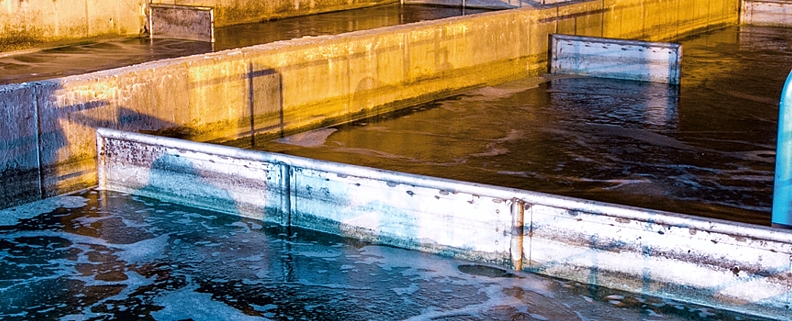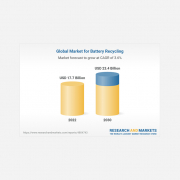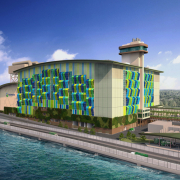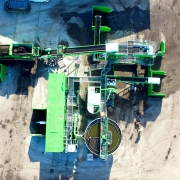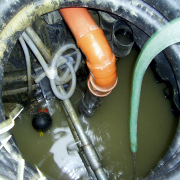Global water and wastewater treatment market: A Billion Dollar Business
According to a recent study, the global water and wastewater treatment market – valued at 4,950 million US-Dollar in 2018 – is expected to reach 6,520 million US-Dollar by the end of 2025.
The market is growing at a CAGR (compound annual growth rate) of 3.5 percent during 2019-2025, Indian Wiseguysreports.com predicted in March this year. “Increasing global water stress coupled with industrial wastewater disposal in aquatic ecosystems has led to a boost in the water reclamation requirements,” the provider of market research reports stated. “In order to curb these growing issues, the consumption of effective treatment equipment systems is likely to propel over the forecast period. The rise in industrial activities and growing contamination have further demanded the treatment of water to make it suitable for end-use purposes. People awareness toward environmental pollution is also a key driver for water and wastewater treatment market.” The report (www.wiseguyreports.com/sample-request/3825731-global-water-and-wastewater-treatment-market-research-report-2019) focuses on water and wastewater treatment volume and value at the global, regional and company level.
Regarding the world market for water and wastewater treatment technologies, Indian company Mordor Intelligence did not give concrete figures; it assumes that the market is likely to register a CAGR of nine percent by 2024. “One of the major driving factors of the market is the rapidly diminishing freshwater resources across the world,” the company pointed out. “However, lack of awareness on appropriate usage of water treatment techniques is likely to restrain the market.” The report (www.mordorintelligence.com/industry-reports/water-and-wastewater-treatment-technologies-market) describes the situation in the segmented market by type (oil/water separation, suspended solids removal, dissolved solids removal, biological treatment/nutrient and metals recovery, disinfection/oxidation and other types), end-user industry (municipal water and wastewater treatment, food and beverage, pulp and paper, oil and gas, healthcare, poultry and aquaculture, chemical and other end-user industries), and geography (Asia-Pacific, North America, Europe, South America, and Middle East & Africa). One of the key market trends is the domination of municipal water and wastewater treatment. According to Mordor Intelligence, the major applications of treatment technologies include preliminary treatment, primary, secondary and tertiary treatment, biological nutrient removal (BNR), resource recovery and energy generation. “North America and Europe are adopting the latest technologies in wastewater treatment at a faster rate than in other regions,” the information says. “The majority of drinking water used in Israel and Saudi Arabia is generated from the desalination process, which is likely to boost the demand for municipal water and wastewater treatment technologies.” Hence, the municipal water and wastewater treatment industry would be likely to dominate the market.
Business opportunities in China
There are favorable business opportunities in China. In a report, offered by ResearchAndMarkets.com, the Chinese treatment technology market is expected to witness a CAGR of 9.45 percent from 2018 to 2023 (www.researchandmarkets.com/reports/4602283/).
The growth is largely fueled by extensive usage of such technologies in municipal water and wastewater treatment, the company wrote. The eastern part of China accounts about one-third capacity of the total water and wastewater treatment plants, while the northern-west China accounts the least number of plants (about one-sixth of the total number). The industry induces market growth as well. According to China’s National Bureau of Statistics, the industrial sector grew by 7.2 percent between January and February of 2018, as compared to the same period a year earlier, exceeding economists’ forecasts of 6.1 percent. “Increasing pressure on the industry to improve water efficiency and reduce pollution discharges is expected to drive the demand for industrial water treatment technologies.” China’s 13th Five-year Plan on urban sewage treatment and water recycling facilities planning would aim to spend around 559 billion Renminbi (about 87.5 billion US-Dollar) or 0.75 percent of its GDP (gross domestic product) on its water treatment industry. “This is expected to increase the application of improved technology in industrial processes.”
Industrial wastewater treatment
The treatment of industrial wastewater is also a big business. According to a report, offered by MarketsAndMarkets (www.marketsandmarkets.com/Market-Reports/industrial-wastewater-treatment-market-57745160.html), the market size is expected to grow from 11.3 billion US-Dollar in 2019 to 15.0 billion US-Dollar by 2024 at a CAGR of 5.8 percent. As forecasted, biocides and disinfectants are estimated to be the largest type of industrial wastewater treatment. “The demand for biocides and disinfectant chemicals is comparatively higher, owing to its high requirement in wastewater treatment applications of all the major end-use industries considered in the study. Biocides are directly related to human physiology and have the ability to neutralize diseases causing microbes. Moreover, the increasing environmental regulations have fueled the demand for biocides and disinfectants in industrial wastewater treatment chemical market.” The zero liquid discharge (ZLD) mandate in the power generation industry plays a major role in enhancing the consumption of wastewater treatment chemicals.
The figures which are indicated by Reports and Data are slightly different. According to its current analysis, the global industrial wastewater treatment market was valued at 10.65 billion US-Dollar in 2018 and is expected to reach 16.60 billion US-Dollar by the year 2026, at a CAGR of 5.80 percent. As reported, the study (www.reportsanddata.com/report-detail/industrial-wastewater-treatment-market) covers in-depth analysis of industrial wastewater treatment and challenges faced by them. Industrial waste treatment involves various kinds of procedures used for treating wastewater that is produced by industries as an undesirable by-product. Once the treatment is over, the treated industrial wastewater (or effluent) may be reused or released to a sanitary sewer or surface water in the environment. Various types of contamination of wastewater require a variety of strategies to remove the contamination. Some of them include oil and grease removal, trickling filter process, removal of acids and alkalis, removal of other organics such as paints, pharmaceuticals, pesticides by vitrification and ozonation, removal of toxic materials such as zinc, silver, arsenic with the help of advanced oxidation process.
Demand for equipment
The demand for equipment will also grow. The size of the global equipment market for water and wastewater treatment was valued at 30.01 billion US-Dollar in 2018 and is estimated to expand at a CAGR of 3.68 percent by 2025, an analysis offered by Grand View Research found out (www.grandviewresearch.com/industry-analysis/water-and-wastewater-treatment-equipment-market).
The surge in investments in these types of equipment and facilities coupled with the growth of the oil and gas industries is projected to drive the market. “Increasing demand for clean water owing to rising population, industrialization, and rapid urbanization from emerging markets is resulting in a marked rise in the adoption of the equipment,” the India and US-based market research and consulting firm informed. “Increasing requirements for minimized global water footprint and optimum quality yields in emerging economies such as the Asia Pacific region are anticipated to drive the market.” Key equipment segments include membrane separation, disinfection, biological, and sludge dewatering. Membrane separation held the highest market share of 6.16 billion US-Dollar in 2018, Grand View Research wrote. “Rising awareness regarding the importance of nanofiltration and reverse osmosis for wastewater treatment applications is expected to play a crucial role in boosting the membrane separation product segment over the forecast period.” Biological equipment was the second-highest revenue-generating segment accounting 16.83 percent of the total market share in 2018. Stringent regulations aimed at controlling water pollution in manufacturing and municipal levels through the utilization of eco-friendly means in developed markets including the U.S., Canada, Germany, and Japan is expected to upscale the requirement of biological equipment for wastewater treatment.
Global service market
Consistently, the service market will increase. A recent study, offered by technology company ReportLinker, suggests that the global industrial wastewater treatment service market is projected to reach 28.0 billion US-Dollar by 2024 from an estimated 20.8 billion US-Dollar in 2019. According to the analysis (www.reportlinker.com/p05780287/Industrial-Wastewater-Treatment-Service-Market-by-Service-Type-Treatment-Method-End-User-Region-Global-Forecast-To.html), this market will grow at a CAGR of 6.1 percent during the forecast period. This rise could be attributed to factors such as expansion in the power generation sector, water intensive processes in the oil and gas, textile, and pulp and paper industries, and increasing rate of industrialization and urbanization. “However, the fact that wastewater treatment is a very costly process and involves a huge amount of capital investment acts as the only major threat to this industry.”
According to the forecast, the Asia Pacific region is projected to be the largest industrial wastewater treatment service market by 2024. “Countries such as China, India, Japan, and South Korea are among the major countries that are considered as the main industrial center points generating a large amount of industrial wastewater,” a press release said. “Over the past few years, this region has witnessed rapid economic development. Also, the growth of the power generation sector in this region results in an increase in the wastewater generated, which, in turn, results in an increase in the industrial wastewater treatment service market.” The pulp and paper industry in countries such as China, South Korea, Japan, and India is expected to grow at a humongous rate, thereby driving the industrial wastewater treatment service market.
(GR 32019, Page 3, Photo: Mulderphoto / stock.adobe.com)

